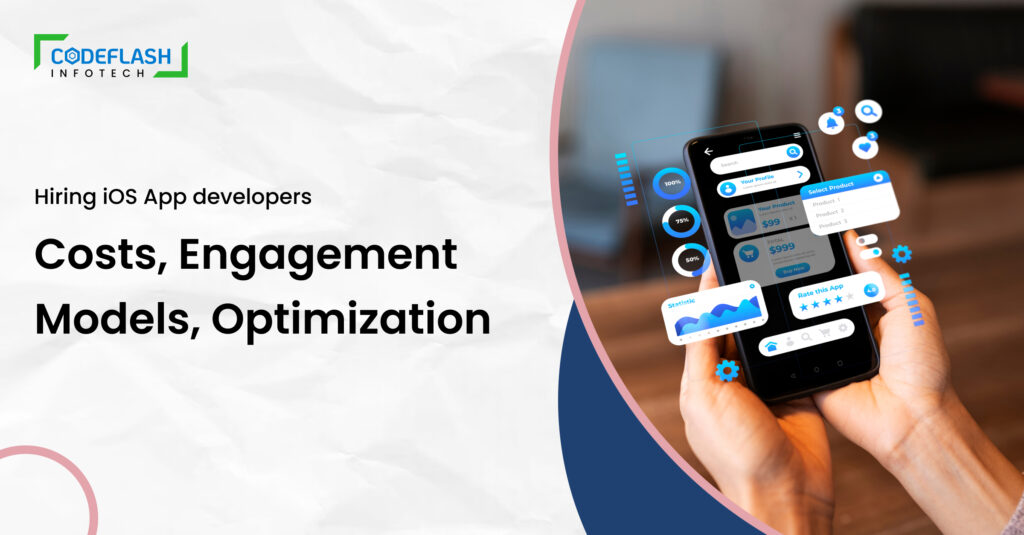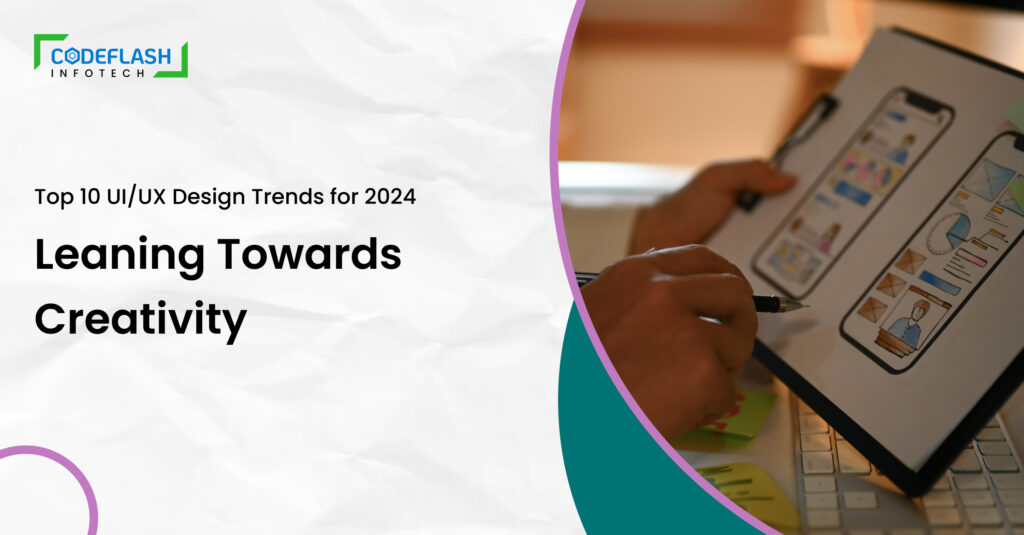
AI UX design for AI-powered products- A Latest Guide for 2023
31 MAR 2023
Welcome to the world of AI UX design, where art and technology meet to create a user experience that’s truly out of this world! With artificial intelligence becoming more advanced daily, designers are exploring new user interfaces and experience frontiers.
From chatbots to virtual assistants, AI-powered product design & interfaces are changing how we interact with technology. In this blog post, we’ll explore how AI transforming the UX UI design Industry and what it means for businesses looking to stay ahead of the curve. So buckle up for an exciting ride into the future of digital design!
What is AI UX Design?
AI UX design is a new way of designing user interfaces that take into account the user’s cognitive biases and limitations. It is based on the principles of artificial intelligence (AI) and machine learning (ML).
AI UX design aims to create user interfaces that are easy to use and effective. To do this, Best UX/UI designers need to understand how users think and behave. They also need to understand how machines work.
Offshore UX Designers who use AI UX design methods create user interfaces that are:
- Easy to use: The user interface should be easy to use for all users, regardless of their level of experience or expertise.
- Effective: The user interface should be effective in helping users achieve their goals.
- Efficient: The user interface should be efficient in terms of the resources it consumes (e.g., time, energy, money).
Different Types of AI UX Design Technologies
There are many different types of AI UX design technologies available to designers. Some of the most popular include:
- Artificial intelligence software: This type of software can be used to create realistic 3D models or prototypes of products. It can also be used to generate realistic animations or simulations.
- Predictive analytics: This technology can analyze data and predict future trends. This can be helpful for designers who want to create designs that are ahead of the curve.
- Augmented reality: This technology can create interactive experiences for users. For example, a designer could use augmented reality to allow users to try on a piece of clothing before buying it.
- Virtual reality: This technology can create immersive experiences for users. For example, a designer could use virtual reality to give a user a product tour before purchasing it.

Pros and Cons of AI UX Design
Some people believe that artificial intelligence (AI) will eventually take over many jobs currently performed by humans. One area where AI is already impacting is the field of user experience (UX) design. Here are some pros and cons of using AI in UX design:
PROS
- Increased Efficiency: AI can help designers work more efficiently by automating repetitive tasks such as data entry and analysis.
- Improved accuracy: Using user data, AI can help identify patterns and trends that would be difficult for humans to spot.
- Greater creativity: As AI becomes more sophisticated, it will be able to generate new ideas and solutions that humans may not have thought of.
CONS
- Loss of jobs: As AI takes over more tasks in UX design, there is a risk that human designers will become redundant. This could lead to job losses in the design industry.
- Ethical concerns: Some people worry about the ethical implications of using AI in UX design, such as how user data will be used and whether robots can understand and empathize with human users.
- Technical problems: There is also a risk that technical problems could arise when using AI in UX design, such as errors in the code or incorrect data being used to make decisions about the user experience.
Best Practices for Implementing AI UX Design
When it comes to AI UX design, there are a fewbest practices that you should keep in mind. First and foremost, AI UX design should complement and enhance your existing UX design process, not replace it. Additionally, remember that AI is not a silver bullet – it’s important to use AI as part of a holistic approach that considers the user’s needs and preferences.
1. Use data to inform your designs
One of the benefits of using AI in your UX design process is that it gives you access to large amounts of data that can be used to inform your designs. When designing with AI, be sure to use user data to help inform your designs. This data can be used to understand user behavior and preferences, which can be incorporated into the design.
2. Consider the user’s context
When using AI to design user experiences, it’s important to consider the user’s context. This includes factors such as the user’s location, devices they are using, time of day, etc. This information can be used to create more personalized and relevant user experiences.
3. Simplify complex tasks
Another benefit of using AI in your UX designs is that it can help simplify complex tasks for users. When designing with AI, look for ways to make tasks easier and more efficient for users. This could include automating certain processes, providing personalized recommendations, or simplifying the user interface.
4. Test and iterate
Finally, testing and iterating on your AI UX designs continuously is important. Use this information to adjust your designs to optimize the user experience as you get more user data.
Examples of AI UX Designs in Action
- Amazon Echo: The Echo is a voice-activated assistant that uses natural language processing to understand and respond to user requests. Its design makes it easy for users to interact with it using voice commands.
- Netflix uses AI to recommend content to users based on their viewing history and behavior. The platform’s UX design makes it easy for users to discover new content and navigate the platform.
- Spotify: Spotify uses AI to personalize the music listening experience for each user. The platform’s UX design includes features like playlists, personalized radio stations, and recommendations based on a user’s listening history.
- Google Search: Google uses AI algorithms to deliver personalized search results to users. The UX design of Google’s search engine is focused on delivering the most relevant results to users quickly and efficiently.
- Siri: Siri is Apple’s voice-activated assistant that uses AI to understand and respond to user requests. The UX design of Siri is centered around making it easy for users to interact with it using voice commands while also providing visual feedback on the device’s screen.
- Tesla Autopilot: Tesla’s Autopilot uses AI to assist drivers with tasks like steering, accelerating, and braking. The UX design of the Autopilot system is focused on making it easy for drivers to understand what the car is doing and when they need to take control.
These are just a few examples of AI UX designs in action. As AI advances, we can expect to see even more innovative designs that make it easier for people to interact with technology.

Potential Limitations of AI UX Design
There are a few potential limitations to keep in mind when implementing AI UX design principles into your designs.
- As an UI/UX Design Company, we understand that AI systems can be opaque, making it challenging for users to comprehend their workings and decision-making process. This lack of visibility often leads to user frustration and mistrust.
- AI systems are constantly learning and evolving, which can result in unexpected changes in behaviour that can be confusing or even disruptive for users.
- AI-powered systems often rely on large amounts of data to function properly, which raises privacy and security concerns.
Conclusion
The emergence of AI in UX design has opened up a world of possibilities for creating (UX/UI) user experiences that are personalized and engaging. With the help of advanced algorithms and predictive analytics, AI design has the potential to deliver a seamless and intuitive experience that caters to the unique preferences and requirements of each user.
The applications of this technology in UX design are just starting to be explored, and the possibilities are immense. As designers continue to push the boundaries of innovation and development, AI will undoubtedly play an increasingly central role in our lives. For more information on the latest AI tools for UI/UX design, be sure to check out our website and read our article on the Top 8 New AI Tools for UI/UX Design.



![Cost of Hiring a Skilled WordPress Developer [Updated Guide]](https://codeflashinfotech.com/wp-content/uploads/2024/03/Analyzing-the-Costs-Associated-1024x535.jpg)
